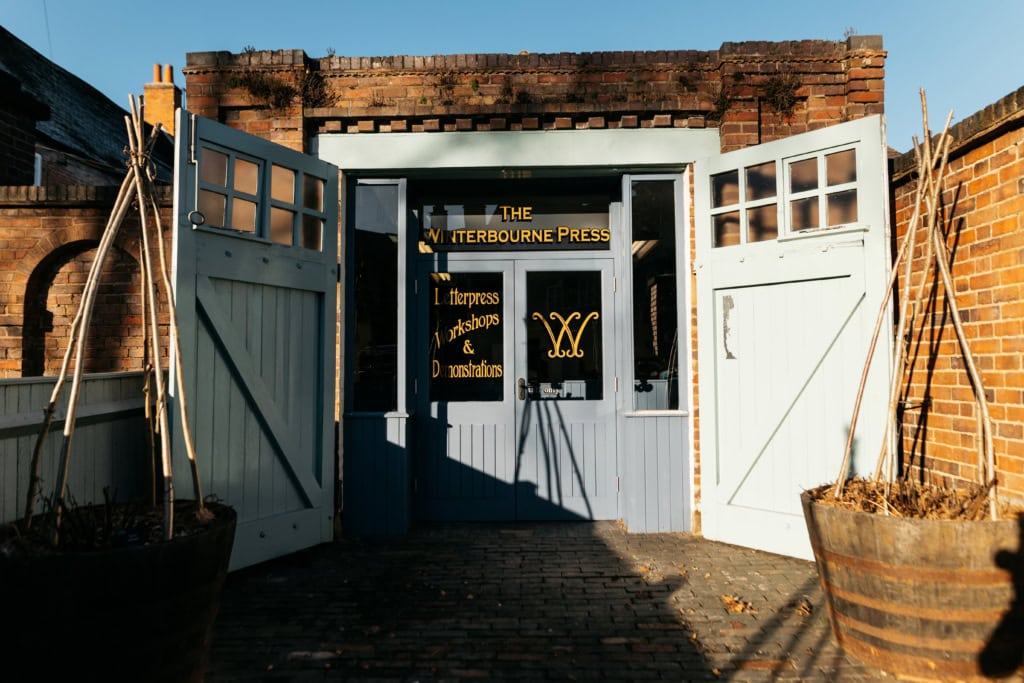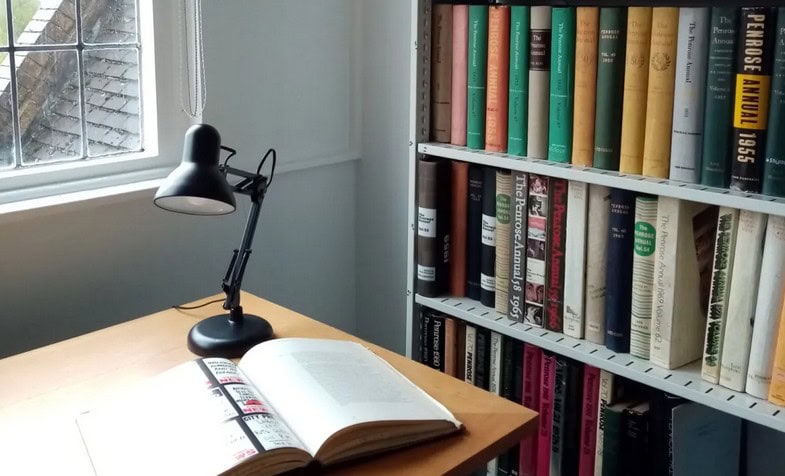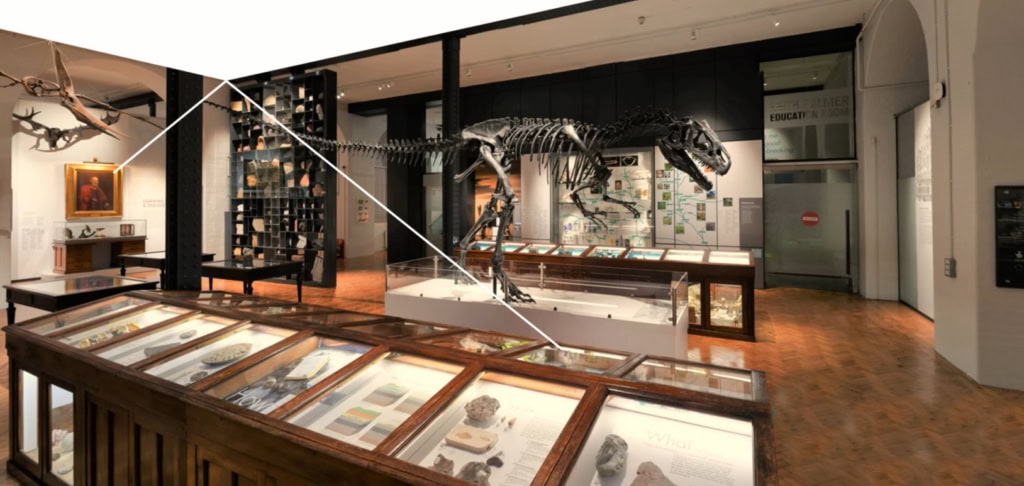Winterbourne Press
The Winterbourne Press will be open and running for during the conference and AEPM delegates are welcome to visit and perhaps even their hands dirty. Winterbourne Press is a working collection of historic printing presses. Printing was central to the Arts and Crafts movement, which inspired the design of Winterbourne. William Morris used a Sherwin & Cope similar to the one on display in the Winterbourne Press. Birmingham itself played a significant role in the development of letterpress printing. The ‘Caslon’ and ‘Baskerville’ typefaces, which are still in use today, are named after the eighteenth-century Midland entrepreneurs who designed them. Winterbourne’s earliest machine, an 1837 Sherwin & Cope Imperial, once belonged to the Flat Earth Press, which was set up during the 1970s by a Birmingham University lecturer and his students. Their machines later fell into disuse but in 2012 Winterbourne salvaged them from a neighbouring property and restored them with the help of volunteers. Winterbourne has built upon this embryonic collection and continues to acquire and restore presses which might otherwise be lost. Other machines in the collection include an Arab platen press dating from the early twentieth century; a Gem proofing press from the 1930s; and a Heidelberg Platen from the 1960s. Winterbourne’s historic presses are operated regularly by volunteers, who produce merchandise for sale in the shop. Printing demonstrations and letterpress workshops take place on a regular basis.
More about the Winterbourne Press on the website of the Virtual Museum of Printing (VMoP).
Winterbourne Typographic Library
Winterbourne’s typographic library will be open to AEPM for the duration of the conference. Letterpress printing has been integral to Winterbourne’s activity for many years, and the site is increasingly becoming a hub for those interested in studying the history of letterpress printing and typography. Winterbourne is now home to a significant library of books relating to print history and culture. The Typographic Library has been located at Winterbourne House, University of Birmingham since Spring 2023, having moved there from Birmingham City University. The Library encapsulates the history of printing, typography and design and is home to an excellent collection of books, journals, magazines, type specimens and other typographic ephemera. Subjects covered include alphabets, bibliography, book trade, bookbinding, graphic design, graphic reproduction, paper making, printing science, printing processes, typesetting, typefaces, typography, and writing. The collection is open to all and can be accessed, free of charge, by appointment. The core of the collection was formed in the 1960s by John Archer, a typographer and teacher of composition in the Department of Printing at Watford College of Technology. Since then, the collection has expanded partly through donations by private individuals, usually former employees in the printing trade or their families. Most of the periodicals were rescued from Watford College in about 2010 when it ceased teaching printing. Other notable donations include those of the late Dr John Hinks, former chair of the Printing Historical Society and a significant scholar of printing in Leicestershire. More recently we have welcomed the collection of James Mosley, former Director of St Bride Library, London, and the leading printing historian of the twentieth century. The Mosely collection comprises reference books, rare books, and Mosley’s working papers.
Cadbury Research Library
AEPM delegates will have the opportunity to visit the Cadbury Research Library, which is home to the University of Birmingham’s extensive collection of rare books, manuscripts, archives, photographs, and associated artefacts. Archivists will be on hand to show materials from its book collections relating to private and fine printing presses: Baskerville, Kelmscott, Bodoni, Foulis, Birmingham School of Printing, etc. The session will also incorporate Leonard Jay and Beatrice Warde and other related archive items, to ensure there is a range of materials for people to view and engage with. It may be possible for delegates to request, in advance, to view particular items. Delegates can search the catalogue here.
Lapworth Museum of Geology
Part of the University of Birmingham, the Lapworth Museum of Geology captures the imagination of all as visitors explore life over the past 3.5 billion years from volcanoes to dinosaurs. The innovative galleries showcase exceptional objects from one of the UK’s most outstanding geological collections. Lapworth also holds the Archive of Darwin, the Archive contains a remarkable record of the research, teaching, administrative and consultancy work, and personal items of Charles Lapworth (1842–1920), which spans approximately fifty years from his early research through to his death. During the conference, as well as exploring the Museum AEPM delegates will be able to take part in curated sessions exploring the archives and museum’s printed material.


